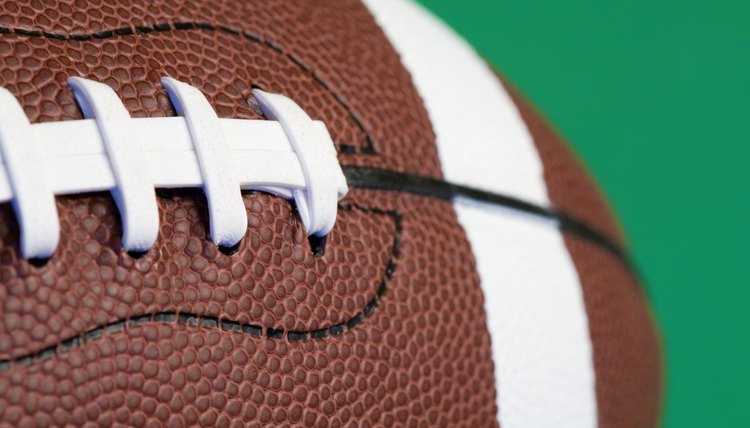How to Play Football With a Torn Labrum

A torn labrum can occur in on the shoulder or the hip. Both are troublesome for football players, but playing with a torn hip labrum is next to impossible in football because of the running and changes in direction required. Playing with a torn shoulder labrum can be very painful, but it is possible and has been done by such players as Ellis Hobbs of the New England Patriots football team. According to Johns Hopkins Medicine, shoulder labrum tears are treated differently depending on the type and level of the injury.
Visit your doctor to determine the extent of your labrum tear and confirm the diagnosis with an MRI or CAT scan. Your treatment options and your ability to continue to play will largely depend on the severity of the injury. Johns Hopkins notes that frayed tears usually require no treatment, but tears due to instability or problems with the biceps tendon require surgery.
Wear a protective shoulder brace or harness and have it secured to your body or your pads with tape to make sure it does not come off. The shoulder protection will limit movement and help protect the shoulder from further injury.
Practice with the injury without taking full contact or hits to gauge what causes pain and what you can do on the field. Know your limitations before you play so that you can avoid some situations that would cause extreme pain.
Take pain medicine as prescribed by a doctor or over the counter anti-inflammatories to reduce swelling and pain in the shoulder during games and practices. You will get the shoulder hit and bumped at times so reducing that pain as much as possible can make playing easier.
Tips
If it's at all possible, take some time off from football to heal your torn shoulder labrum. Even though you can play, it doesn't hurt to give it a break from rough-housing.
Warnings
If you are hit during the game and the pain in your shoulder increases, take yourself out of the game.
References
- Johns Hopkins Medicine Orthopaedic Surgery: What is a Labrum/Labral Tear?
- Boston Globe: Hobbs Played Super Bowl With Torn Labrum
- Varacallo M, Mair SD. Superior labrum anterior posterior (SLAP) lesions. [Updated 2019 Jun 4]. In: StatPearls. Treasure Island (FL): StatPearls Publishing; 2019 Jan.
- American Academy of Orthopaedic Surgeons. Shoulder joint tear (glenoid labrum tear). Updated October, 2017.
- Varacallo M, Mair SD. Biceps tendon dislocation and instability. [Updated 2019 Sep 7]. In: StatPearls. Treasure Island (FL): StatPearls Publishing; 2019 Jan.
Writer Bio
Based in Harker Heights, Texas, Timothy Onkst has been writing about sports, fitness and health since 2003. His articles have appeared in a variety of publications including "Texas Roundball" magazine, Yahoo Sports, Fox Sports and other websites.
